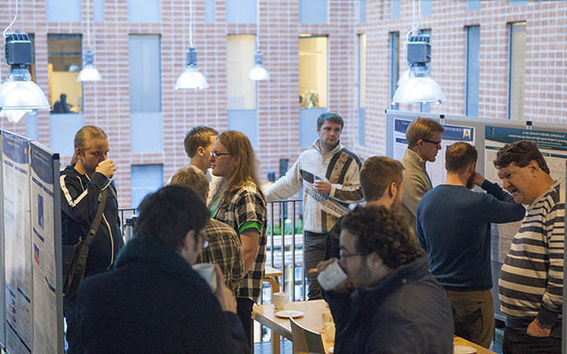Solar activity can disturb even air traffic

During the space era, that is the past 50 years, the Sun has been unusually active. Yet during the last years the activity has been quite different compared to the rest of the ongoing space time.
Except for the current solar cycle, when the solar activity has significantly weakened. The Sun has entered to the same activity level as hundred years ago. As at that time the methods to study the Sun were not as advanced as they are now, we still have many open questions and predicting is very difficult, states professor Kalevi Mursula from the ReSoLVE Centre of Excellence.
- The solar activity phenomena are due to the dynamo mechanism that operates in the outer 30 percent of the Sun, in a region, where heat is transferred by convective motions. This causes the convection zone behave in the same way as a boiling kettle, the whole region becoming highly turbulent and therefore chaotic. Studying the dynamo is essential so that the behavior of the Sun could be understood in the long run. Computer-based modelling is virtually the only available tool in this - it is the main focus of our research group, states Docent Maarit Käpylä, leader of the DYNAMO team, a group of computational astrophysicists and data analysts at the Aalto University Department of Computer Science.
Insight into the solar long term variability helps to understand for instance the origin and the development of the solar eruptions. The space weather, in other words the solar short-term variability, is continuously followed. On the basis of it the origin and the development of the eruptions can be predicted to some extent.
The effect of the Sun in the space can be compared for instance to the effects of the volcanic eruptions to air traffic. It is better to schedule space walks and space flights so that the likelihood of the solar eruptions is small, states Mursula.
The solar particle radiation - the solar wind - affects the magnetic field of the Earth, which is continuously disturbed. The biggest disturbances in the space closest to the Earth are caused not only by strong coronal mass ejections, in which the density of the solar wind increases and the structure of the magnetic field changes, but also by the powerful eruptions produced by the most energetic solar particles. Yet that influence is difficult to predict, as we saw in the case of the burst that halted the air traffic in Sweden on the 5th of November.
New effects on the climate by the Sun?
The Sun has a 10-11 year cycle that includes both an increase in the amount of sunspots and their disappearance. In the era when the number of spots is decreasing, there are fast currents in the solar wind that effectively accelerate the particles in the magnetic field of the Earth. These particles bomb the upper atmosphere, which has been noticed to influence the North Atlantic oscillation - the most important climate structure of the arctic areas. This particle bombing favours the positive phase when the differences in the pressure are big and the northern hemisphere has humid and mild winters. In the negative phase the winters are dryer and colder. The influence of the particles is strongest in the aurora borealis areas due to the structure of the magnetic field of the Earth.
Direct satellite observations of the Sun radiation have been gathered only for about 40 years or less. Ground-based observations of the Sun are inaccurate due to the absorption tendency of the atmosphere. Sunspots have been measured already for 400 years, but the ratio of the spots and the long-term evolution of the ratio is not yet very clear. Thus there is a lot of uncertainty in the level of the radiation. In addition, there is still strong disagreement concerning the level of sunspots 200-400 years ago, states Mursula.
ReSoLVE consists of five research groups and is directed by professor Kalevi Mursula from the University of Oulu. Partner institutions in the consortium are the Department of Computer Science at the Aalto University and the Finnish Meteorological Institute. ReSoLVE has been granted the Centre of Excellence status for 2014-2019.
More information:
Aalto University
Department of Computer Science
Maarit Käpylä
+358 50 430 1059
University of Oulu
Kalevi Mursula
+358400688365
Read more news

DeployAI Partners Gather for Heart Beat Meeting in Helsinki
The European DeployAI project's partners gathered for the Heart Beat meeting hosted by Aalto University Executive Education in Helsinki.
Get to know us: Associate Professor Maria Sammalkorpi
Sammalkorpi received her doctorate from Helsinki University of Technology 2004. After her defence, she has worked as a researcher at the Universities of Princeton, Yale and Aalto.
Aalto computer scientists in ICML 2024
Computer scientists in ICML 2024